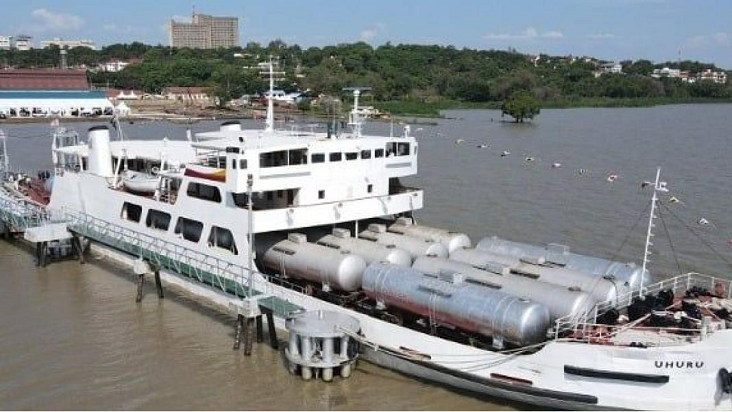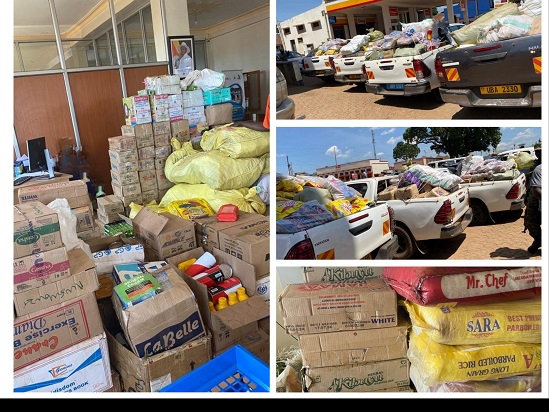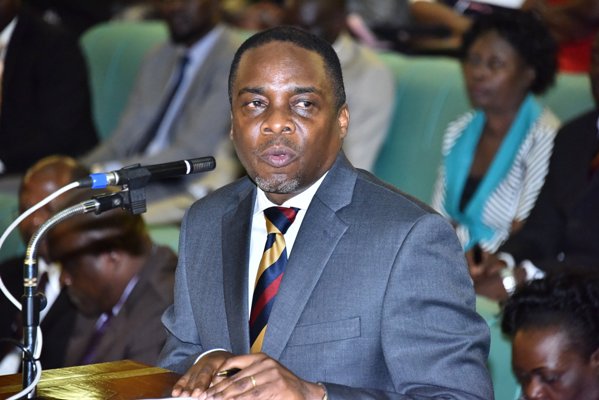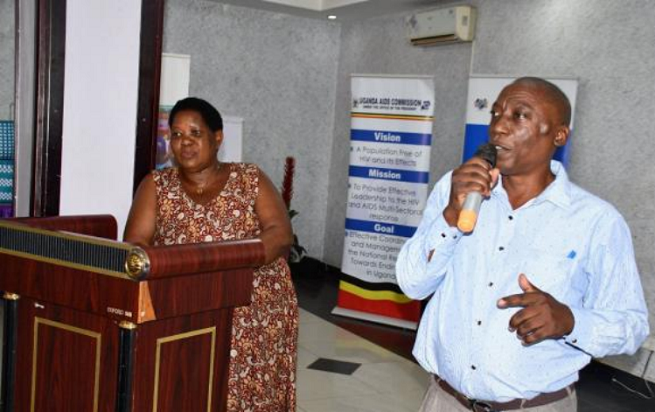MV Uhuru with tank wagons headed to Kampala in 2021/ Courtesy photo
Before Kenya and Tanzania realise the sweat of their economic competition for the East and Central African logistics market, it will be the inland countries to benefit sooner than later.
The two coastal countries have in recent years intensified efforts to improve their infrastructure networks, both hard and soft, targeting landlocked countries in Uganda, Burundi, Rwanda and South Sudan, and more recently, the Democratic Republic of Congo, DRC.
Ugandan imports account for more than 25 per cent of Mombasa’s transit cargo business, while South Sudan’s imports take another 9 percent. However, Kenya’s Mombasa Port is poised to lose a big chunk of the trade volume attributed to South Sudan, as Juba pursues alternative routes.
In 2021, Vice President Riek Machar said they had started negotiations with the government of Sudan to secure space at Port Sudan so that they could import through the Red Sea route, as opposed to Kenya.
In September 2022, the country, which was the second most important to Kenya’s ports after Uganda, announced that it had secured land from the government of Djibouti to construct port facilities at the Port of Djibouti.
VP Machar said either way, the Red Sea routes were shorter than the Kenya route through Uganda, with Port Sudan adding the benefits of using the railway as well as partly the River Nile to move goods to and from South Sudan.
He allayed fears that the country will abandon the regional transport project LASPNET that is developing the transport corridor through Uganda and Kenya, saying the southern neighbours; Uganda and Rwanda are too important to lose.
Whatever the case, Mombasa will see its business with South Sudan reduce if one or both of Juba’s plans, just as Uganda will lose the opportunities of other countries that attract importers. As this happens, Kenya will have to endure the onslaught by Tanzania for a piece of the business opportunities.
In December 2022, Dar es Salaam reached a contract with a Chinese contractor for the development of a standard gauge railway that will run from Tanzania’s ports to Burundi, DRC and Rwanda, as well as to Uganda through the Lake Victoria port of Mwanza.
The 2.2 billion dollar railway system is aimed at easing transportation through lower costs, and faster and safer means than using roads. The project is expected to cut costs for example by a third to 4,000 dollars to move a tonne of cargo from Dar es Salaam to the DRC border, while the time taken would fall from 30 days to 30 hours but by 2027 when it should be fully operational.
“Upon completion of the SGR, Tanzania will be in a better position to utilise its strategic geographical positioning to facilitate cross-border trade,” said President Samia Suluhu Hassan after witnessing the signing.
With this, Tanzania’s SGR project has now cost 10.04 billion dollars with most of it being borrowed, according to Hassan, who justified the move “to borrow for this important infrastructure and other sustainable development projects because we don’t have enough local resources.”
But Kenya is not seated as President William Ruto has said at public functions that his government will move on with the stalled plan of extending the Kenya SGR to the border with Uganda.
Currently, the line terminates at Naivasha, 351 kilometres to the border with Uganda at Malawi. Kenya initially said it was not sure that Uganda would build a similar SGR line, up to the border so that there would be seamless train operations from Mombasa to Kampala, a position that was voiced by the Chinese financiers of the project. More than 5-years later, Uganda is yet to give this assurance, at least by activity.
However, the Uganda Railways Corporation is refurbishing the old meter gauge railway line to Malaba and says it will provide for easy transfer of cargo between the meter rail and the SGR trains. President Yoweri Museveni recently revealed that the government is going to build SGR railway lines inland, and would later extend the SGR from Kampala to Malaba.
Hope was restored when, just after his inauguration as president, William Ruto vowed that the extension of the SGR to the Ugandan border was a top infrastructure priority project of his government. Kenya has also been revamping the Kisumu Port since 2018 after an agreement, commonly known as the handshake, between then-president Uhuru Kenya and former presidential rival Raila Odinga.
The revitalized Kisumu port also featured the launch of the refurbished MV Uhuru which would boost transportation, especially of petroleum products across Lake Victoria. A second ship, MV Uhuru 2, also owned by the government of Kenya is due to start operations.
The Kenya-Uganda water transport has been boosted by the launch of the MT Kabaka Mutebi ship that is due to start commercial operations this week, shipping a maximum of 4.5 million litres of fuel per trip, with 2 trips a week.
All these developments have boosted the fortunes of Mombasa Port because it means faster movement of goods from Kenyan inland ports results in more and faster business at Mombasa.
Ken Opalo, Assistant Professor at Georgetown University’s School of Foreign Service said of the Ugandan boat: “This was an important milestone in the planned revival of port operations in Kisumu and its elevation as a serious regional logistical hub. Yet, Kisumu can do much better if we dare to dream. Uganda, Northwestern Tanzania, Rwanda, Burundi and Eastern DRC are all within Kisumu’s potential logistical corridor.”
Bearing in mind that Kenya already lost the chance to host Uganda’s crude oil export pipeline, EACOP, Opalo says: “Tanzania’s designs to build a new standard gauge railway (that is much cheaper than ours, I should add) to Mwanza and then onwards to Rwanda and Burundi only increases the urgency of the need to aggressively elevate Kisumu’s status. If we are not careful, Tanzania is poised to race ahead of us as the gateway to Eastern and Central Africa.”
According to him, it is very possible that after Tanzania completes the railway to Mwanza and Kigoma, it will easily promote its Lake Victoria operations as the regional logistics hub. Apart from better and modernized facilities, the ports have to ensure better handling, and minimal losses through damage, delays and theft.
However, attracting business away from a rival port or corridor also has to do with the costs of transit services. Ugandan transporters through Mombasa pay the heaviest price in the region, of about 9,700 shillings to move a one-tonne, compared to the 1 Dollar (3,700 Shillings) that is recommended internationally, while the reverse route costs 8,411 Shillings. Moving a tonne from Dar es Salaam to Kampala costs 4,535 Shillings, less that half of what it costs to use Mombasa.
The East African Shippers Council says in their latest report that the Bujumbura-Dar es Salaam route costs 3,953.74 (1.02 Dollars) per tonne. According to the survey, transporters that use the Northern Corridor (Mombasa through Uganda) pay some of the highest costs in the world, especially because there are few alternatives in the region.
The survey also shows that the cheapest route in the region is Dar es Salaam-Bujumbura, which costs 77.52 shillings or (0.02 dollars) per tonne, followed by Dar es Salaam-Kigali at 658.95 shillings (0.17).
According to the plan for the Tanzania SGR, the country will develop a 156km section from Malagarasi to Uvinza while Burundi builds the line from the border to the capital, Gitega.
Experts think that while both countries are putting up commendable effort, it will depend on who accomplishes the plans first.
-URN





